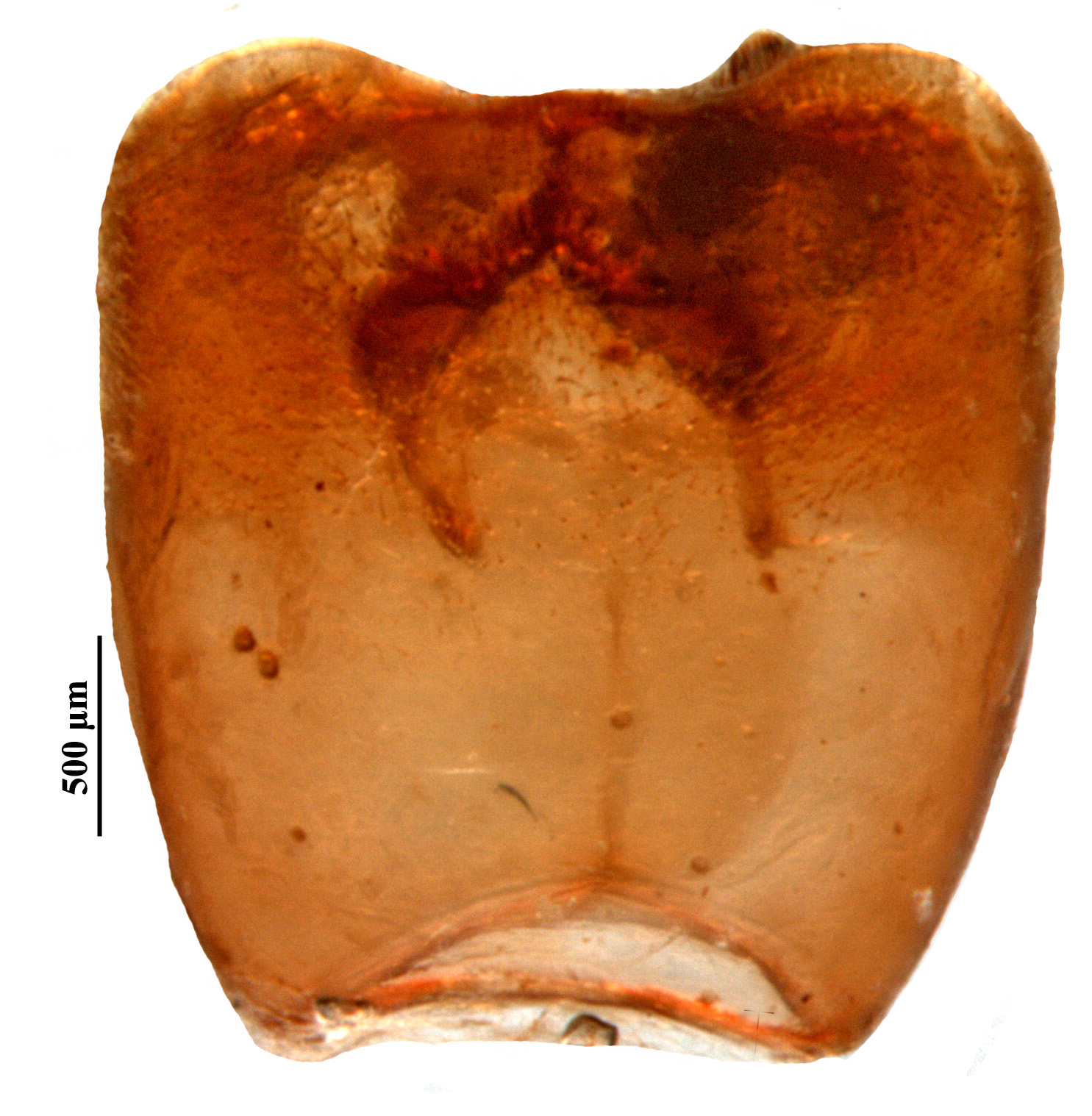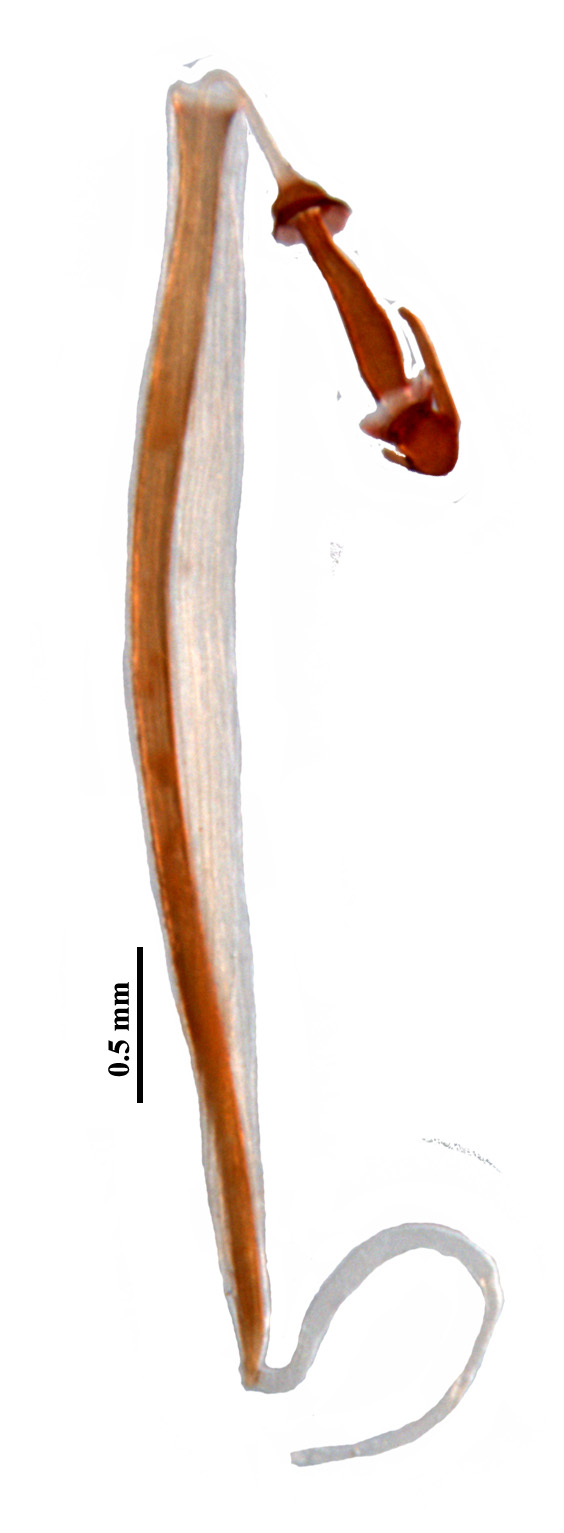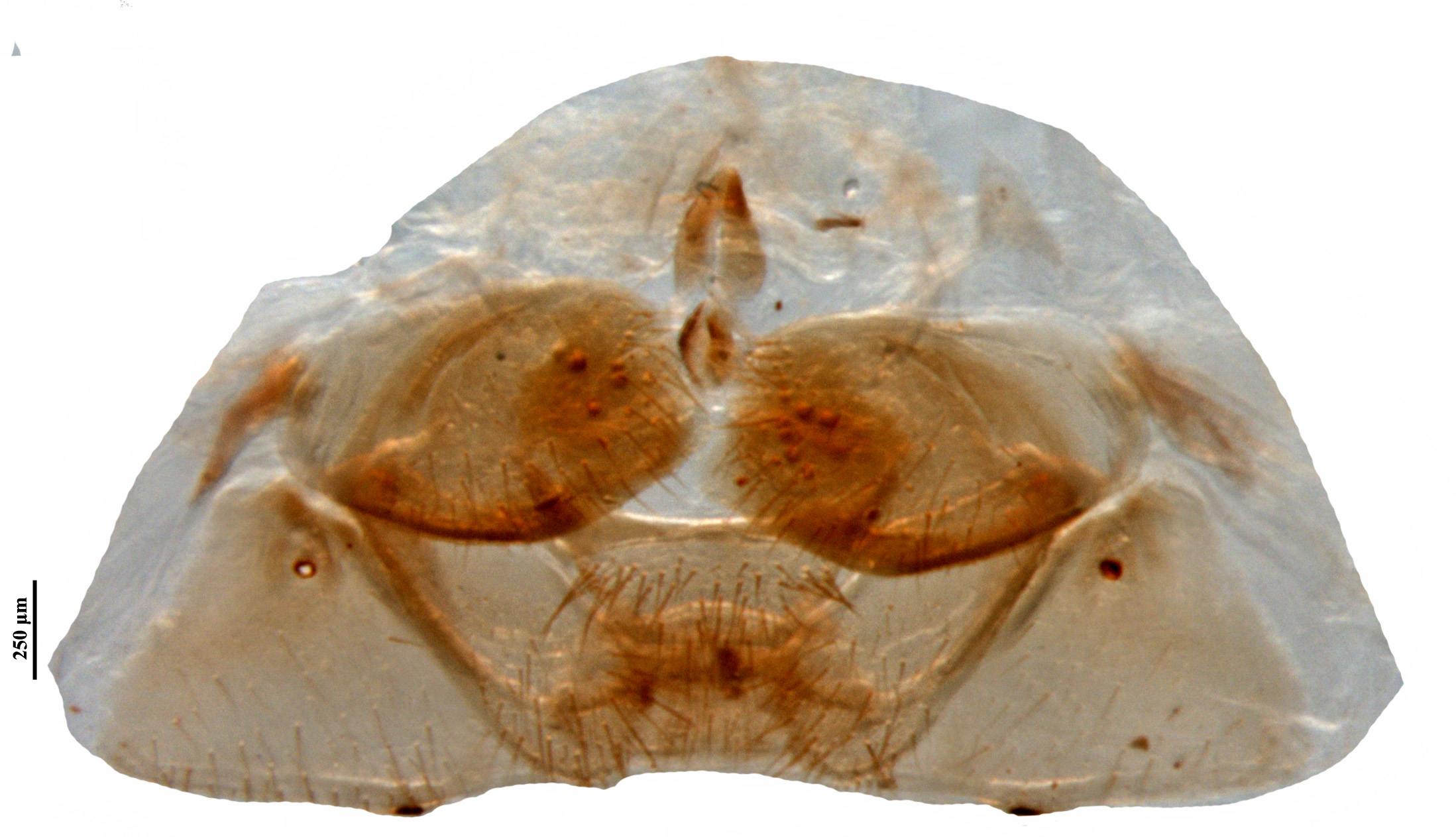Eurysaspis flavescens (Distant, 1911)
Synonyms
Nil
Taxonomic position
Hemiptera: Heteroptera: Pentatomidae: Pentatominae
Diagnosis
- Head distinctly shorter than broad including eyes
- Mandibular plates straight, lateral margins distinctly sinuate, smooth and as long as clypeus
- Antennae with segment I just short of apex of head
- Pronotum convex dorsally with anterolateral margins nearly obliquely straight
- Humeri rounded
- Pro and mesosternum with median longitudinal keel, reaching anterior margin of forecoxae; metasternum with prominent roughly hexagonal elevated carina with groove posteriorly to hold apex of basal abdominal tubercle
- External scent efferent system with peritreme modified into ruga extending beyond midmetapleuron
- Scutellum reaching more than 3/4th of abdomen with lateral margins slightly concave and apex broadly rounded
- Legs with femora unarmed, tibiae dorsally with narrow, indistinct, longitudinal groove
- Basal abdominal ventrite with short and stout tubercle
Male genitalia
Genital capsule roughly quadrangular; dorsal rim broadly and deeply excavated concave; dorsal side of genital capsule with indistinct median longitudinal carina; caudo-lateral lobes rounded; ventral rim concave with median emargination. Paramere with crown bilobed; crown with two lobes of equal height, faced towards each other. Phallotheca vase-like, sclerotized, constricted anteriorly and posteriorly; three conjunctival processes; processes of aedeagus slightly sclerotized, fused to single lobe-like structure, encircling aedeagus; aedeagus short.
Female genitalia
Terminalia with valvifers VIII elongate oval with inner posterior angles distinct; valvifers IX fused to single plate, trapezoidal; laterotergites IX finger-like with posterior apex rounded, nearly reaching or slightly shorter than apex of abdomen; laterotergite VIII triangular with caudal margin smooth. Spermatheca externally fluted to bulb-like dilation; apical receptacle orbicular with two finger-like processes.
Biology
Not known
Host plants
Sandal (Santalum album L.) (Chatterjee, 1934).
Distribution
Karnataka (Salini and Viraktamath, 2015); Kerala (Salini and Viraktamath, 2015); Maharashtra (Ghate, 2013).
Comments
This genus is characterized by the uniformly convex pronotum, srongly sinuate lateral margins of mandibular plates, elongate scutellum, slightly extending beyond 3/4ths of abdomen, pro and mesosternum with well developed median longitudinal keel and metasternum with hexagonal keel holding the apex of the basal abdominal tubercle posteriorly.
Selected References
Chatterjee, N.C. (1934) Entomological investigations on the spike disease of sandal (24). Pentatomidae (Hemipt.). Indian Forest Records, 20, 1–31.
Distant, W. L. (1911a) Rhynchota indica (Heteroptera). The Entomologist, 44, 22-25.
Distant, W.L. (1902) Rhynchota. Vol. I. Heteroptera. In: Blanford, W.T. (Ed.), The Fauna of British India Including Ceylon and Burma. Taylor and Francis, London, pp. I–XXXVII + 1–438.
Ghate, H. V., 2013. Eurysaspis flavescens Distant, a new Pentatomidae member for Indian territory. Prommalia., I: 45-48.
Salini, S. & Viraktamath, C.A. (2015) Genera of Pentatomidae (Hemiptera: Pentatomoidea) from south India–an illustrated key to genera and checklist of species. Zootaxa, 3924 (1), 1–76. https://doi.org/10.11646/zootaxa.3924.1.1





